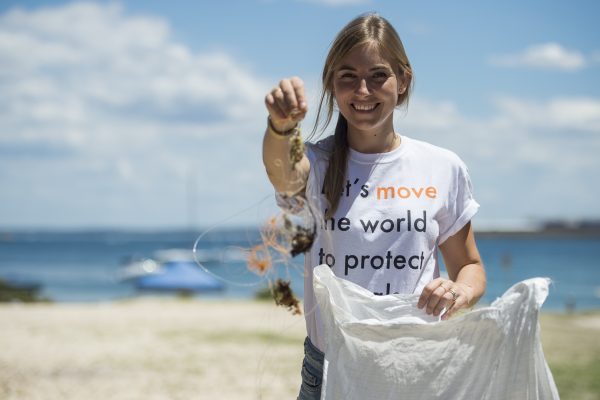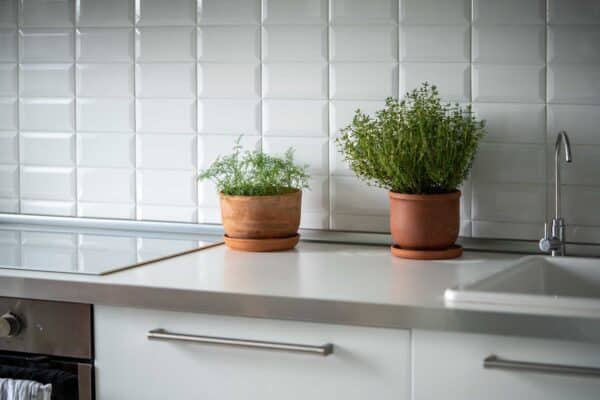Two months into living in my new home, I’m beginning to realise that I’ve seriously underestimated the sheer amount of time, energy, cost, and patience required for Project Regenerate my Backyard.
The plan was always to tackle the project one small section at a time. But every week, I optimistically think, ‘this will only take a day or two’ and every week, the garden laughs at me.
Rewind to July 2023 when Dave (husband and gardening partner) and I first bought our dream home. For the five years previously, we lived in a rental where I began to take an interest in gardening.
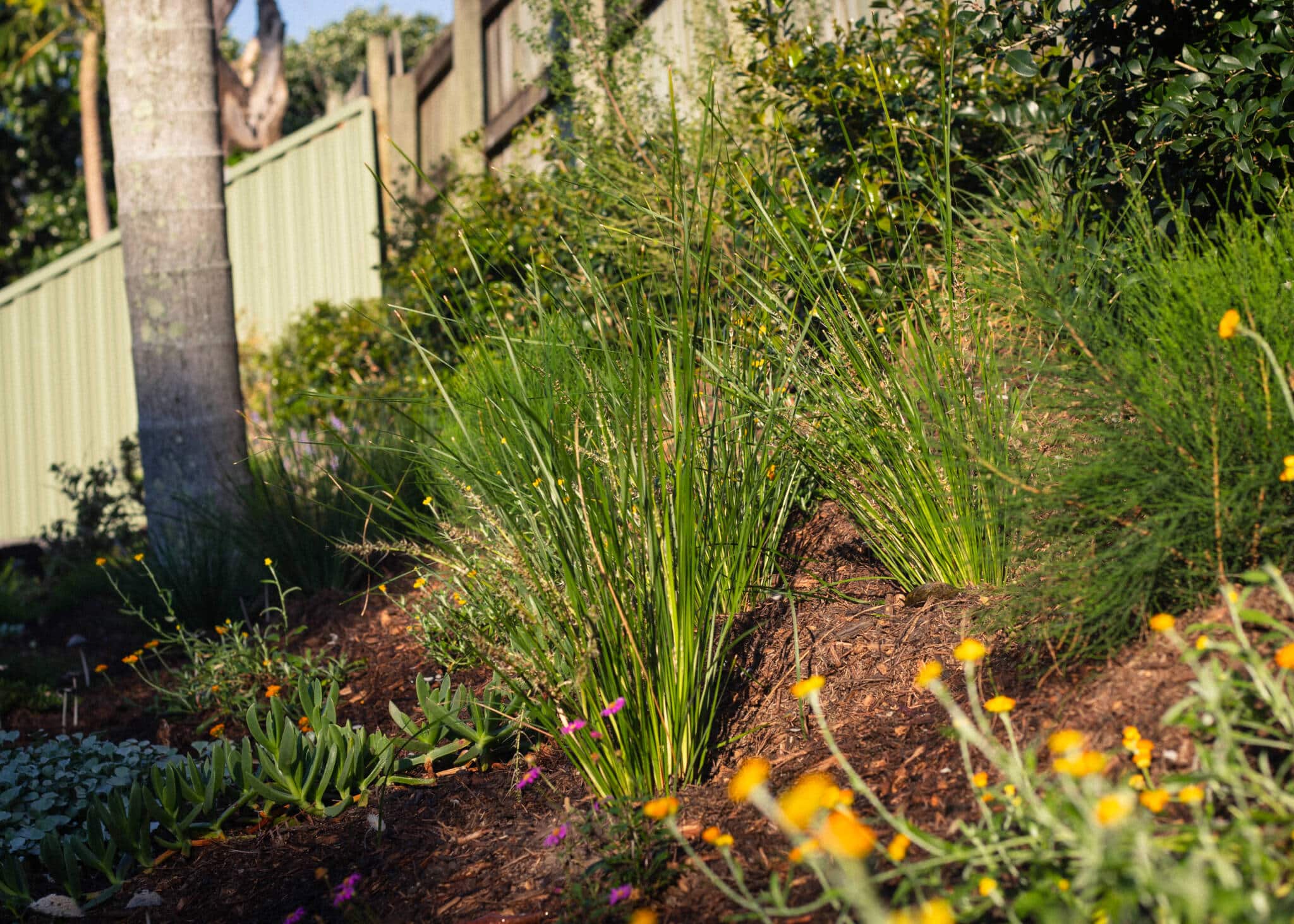
First, a tiny veggie patch, three raised beds housing herbs and leafy greens. Soon, a mini pollinator garden sprouted up alongside it, filled with lavender, rosemary, and butterfly bush. We stopped using pesticides and insecticides, recognising the negative impact on the delicate balance of our backyard biosphere. Fast forward a few years, and my once-monotonous expanse of lawn began to morph subtly yet significantly.
The grass soon became dotted with tiny yellow oxalis and clover flowers. The periphery came alive with a profusion of flowering natives in pots, providing a banquet for the blue-banded bees.
The veggie patch became more diverse as I learned to grow different types of food through the seasons. Now filled with native stingless bees, a variety of butterflies, tiny red assassin bugs, and lady beetles feasting on aphids. Birds, skinks, geckoes, green tree frogs, and even a blue-tongue lizard—the garden became a bustling hub of biodiversity.
I loved that garden. It was full of life and enriched my life in return. I knew I wanted the same in our new home.
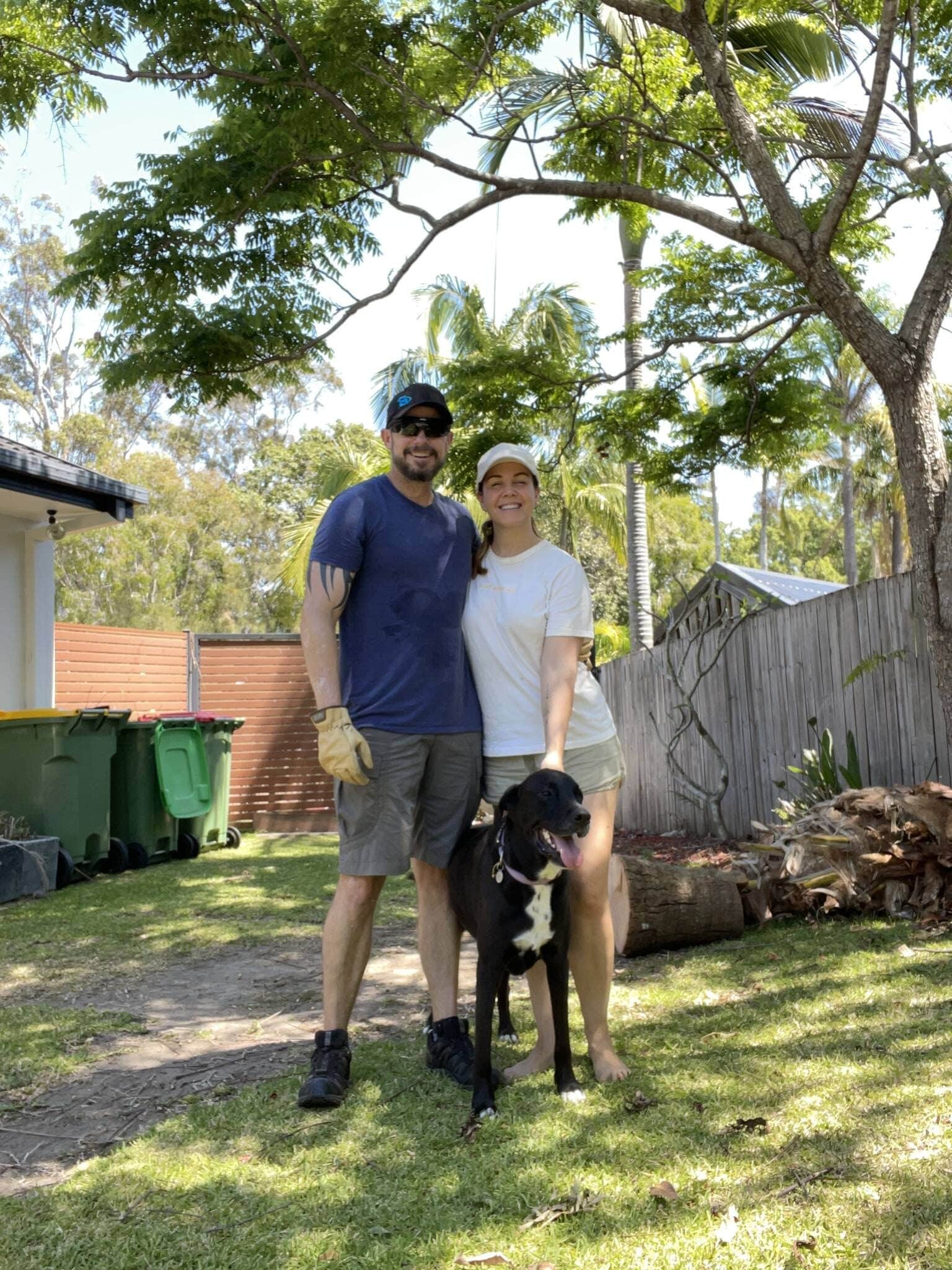
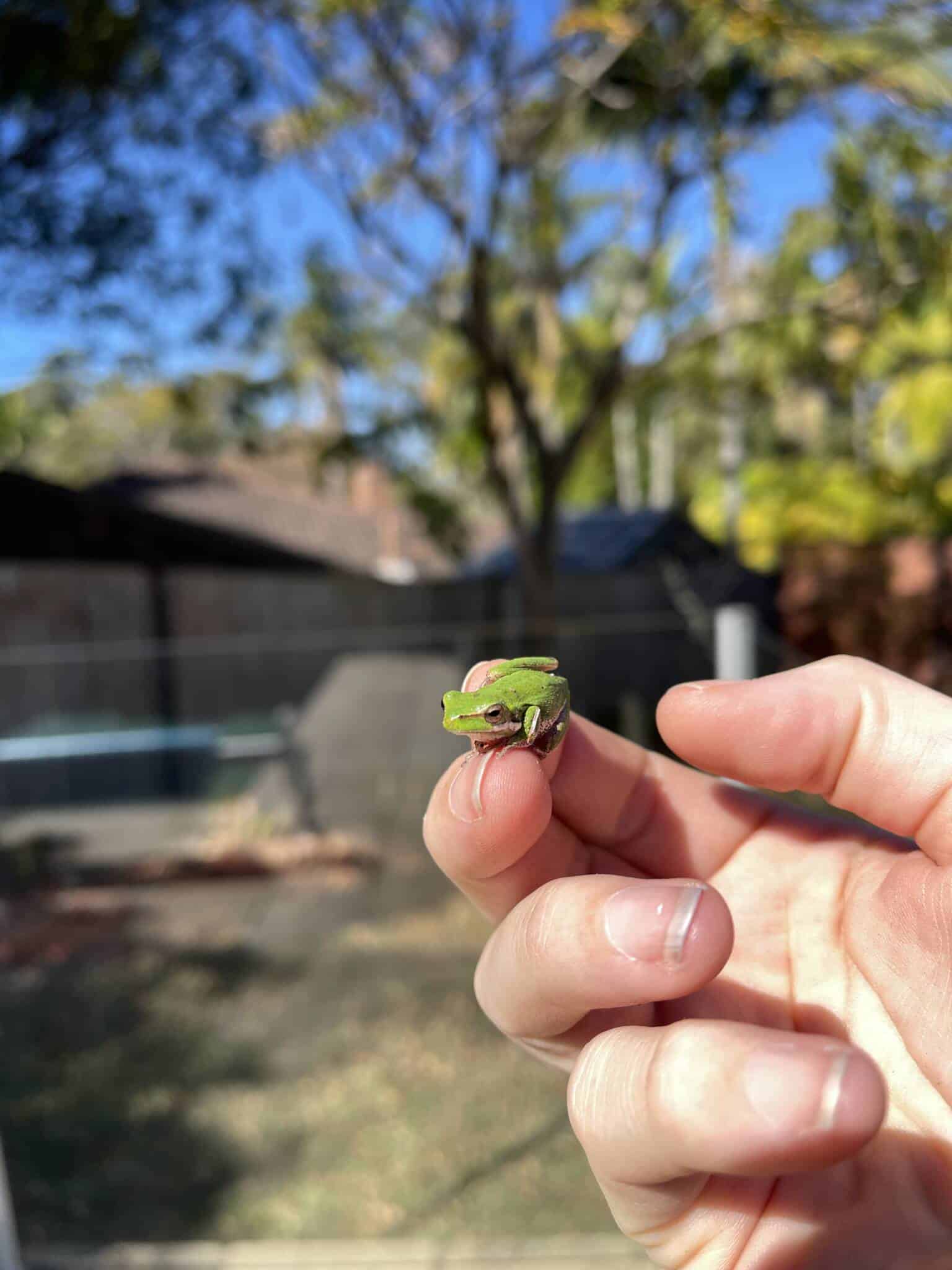
What we’re working with
941 square metres with the house right in the middle. There are six-ish distinct areas to work on. The house is on a steep slope, and the yard has some flat sections, but a lot of undulation, coupled with heavy, compacted clay soil, which makes it a challenge for even the most experienced landscaper. Which are we not.
Our naivety and optimism may the only things getting us through what we’ve taken on.
Our yard:
- The front yard has four separate garden beds full of half-dead palms, rocks, and red chip bark and a small stretch of lawn up a hill.
- The backyard is comprised of an area behind the pool and fence with more lawn fringes with golden canes along the fence line.
- A patch of lawn with a lovely old Chinese Flame Tree overhanging outside my home office. When the morning light filters through the leaves, it’s magic.
- More lawn and semi-paved area between the back door and pool – this will be the alfresco/patio in a few months.
- Behind the house, there’s a 21-metre expanse that we’ve called ‘the corridor’, and alongside that, a retaining wall garden.
- Finally, an area that stretches the length of the south side of the house will be home to the veggie gardens, greenhouse, and compost bins.
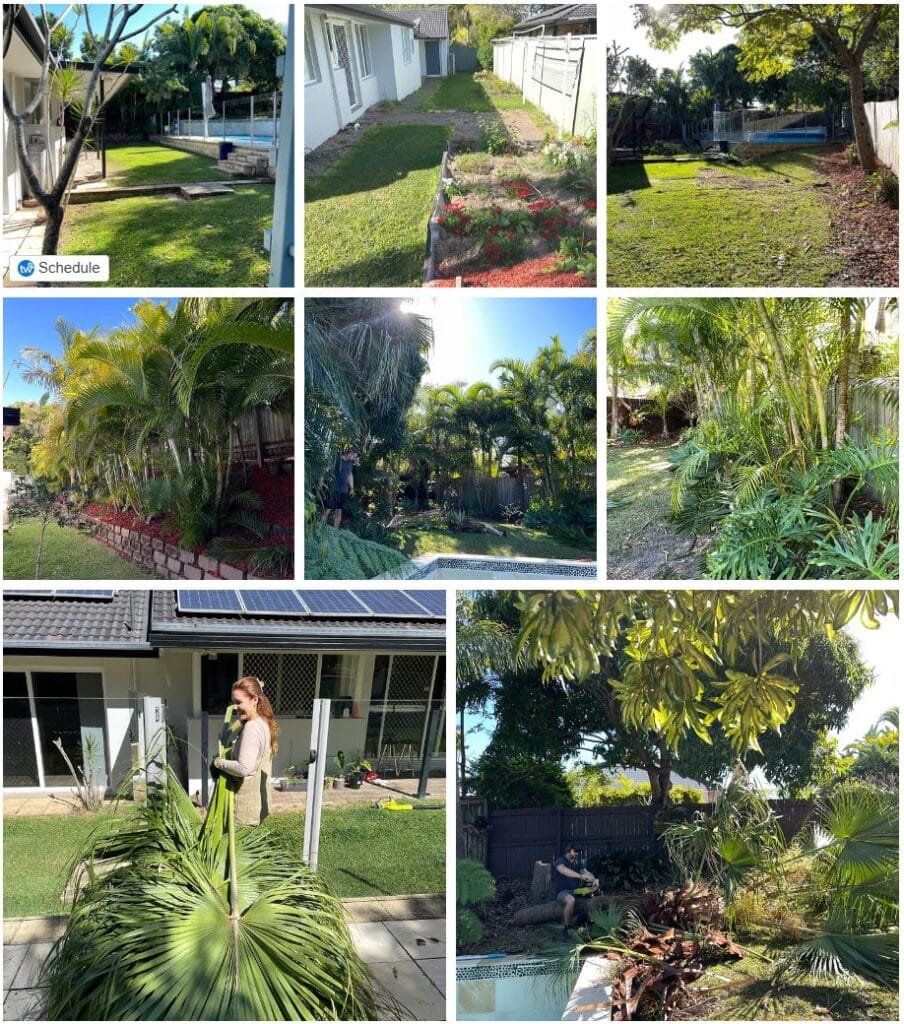
The issues before we even started
While the house renovation was underway, we got stuck into clearing over 100 golden cane palms from around the yard, with a few dozen agaves and crotons thrown in for good measure. Dave and I thought we’d clear the yard of palm trees, do a little landscaping, build the veggie garden and greenhouse, plant some beautiful natives, and finish alongside the reno completion, ready to move in by January 2024.
Oh, the naivety.
Over the previous summer, the days alternated between torrential rain and blistering 38+ degree heat waves, so yard work was put on a two-month pause. Then it flooded. Ankle-deep water pooled around the house, leaving behind a mass of gluggy, squelching lawn once the water finally subsided. It’s wild that previous owners lived with this over the last 40 years.
So, we had the yard excavated to install dozens of drains to solve any future flooding issues. Then full steam ahead? Not quite. The house reno dragged out until May, draining our enthusiasm and bank accounts. So, the yard sat untouched for another five months.

The progress so far
Two months of living in our new home, spending every weekend working on the gardens. We’re here and making progress. Slowly, but it’s progress all the same.
The new favourite saying, “How do you eat an elephant? One bite at a time.”
So far, we’ve managed to transform a small area in the front yard next to the porch into something that finally feels alive. The before was a strip of dirt covered in red chip bark. The front porch faces out to a lovely park across the street. The afternoon sun filters through the trees, and we can hear the lorikeets, currawongs, magpies, and occasional kookaburra.
So, I popped a bench seat in the garden for a place to sit and just be. I planted hardy native groundcovers – Viola hederacea, Dichondra repens, and Myoporum – which will eventually spread and take over the garden and help supress the weeds.
There’s a lovely silvery Westringia ‘Wynabbie Gem’ aka Coastal Rosemary that flowers almost all year round. On the other side of the bench seat stands a darkly hued ‘Burgundy Queen’ Leptospermum. Both are very much plant and forget once established. The beauty of Australian natives that suit your local soil and climate.
Below, the front porch garden before, and a few weeks later.
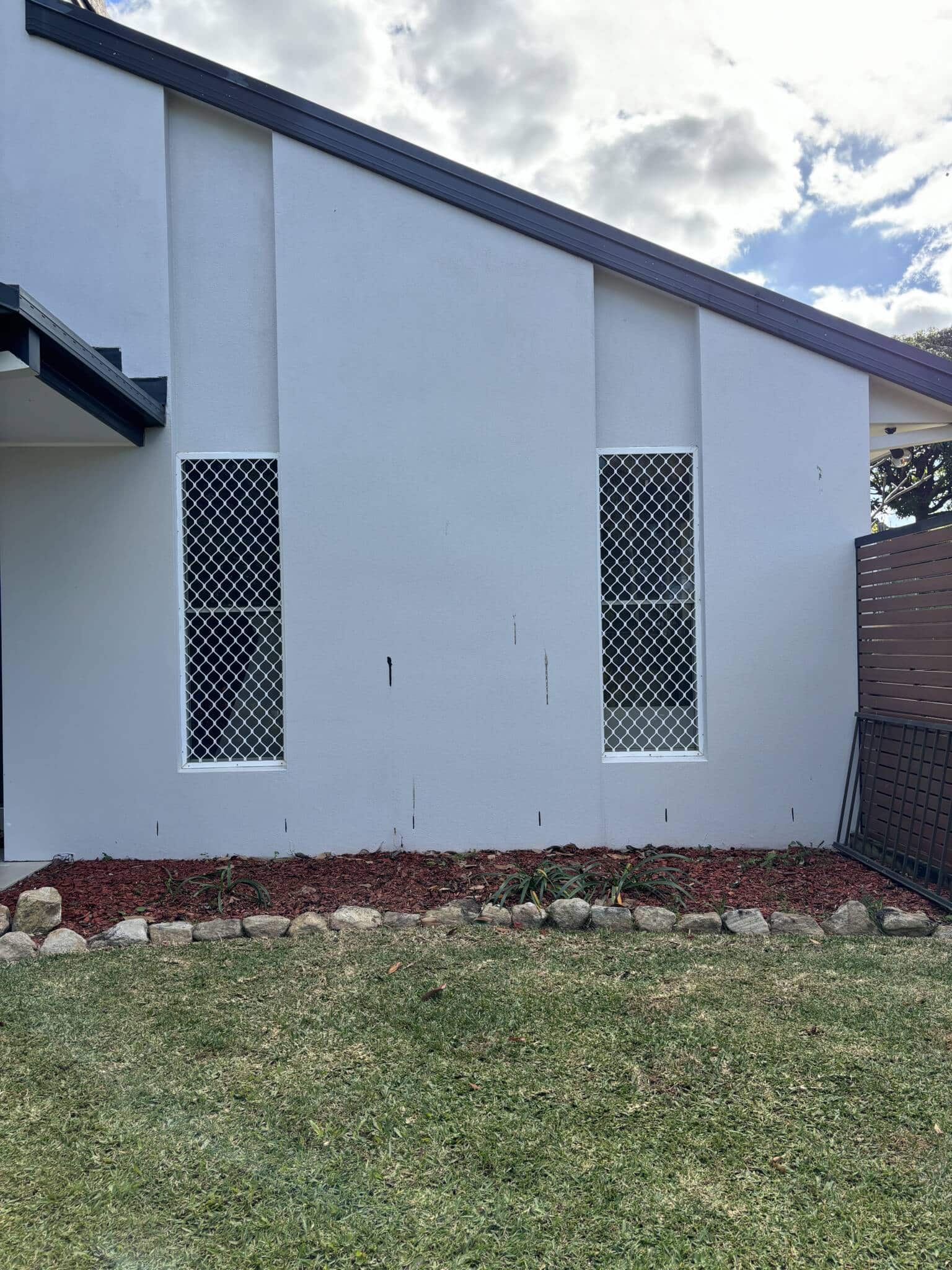
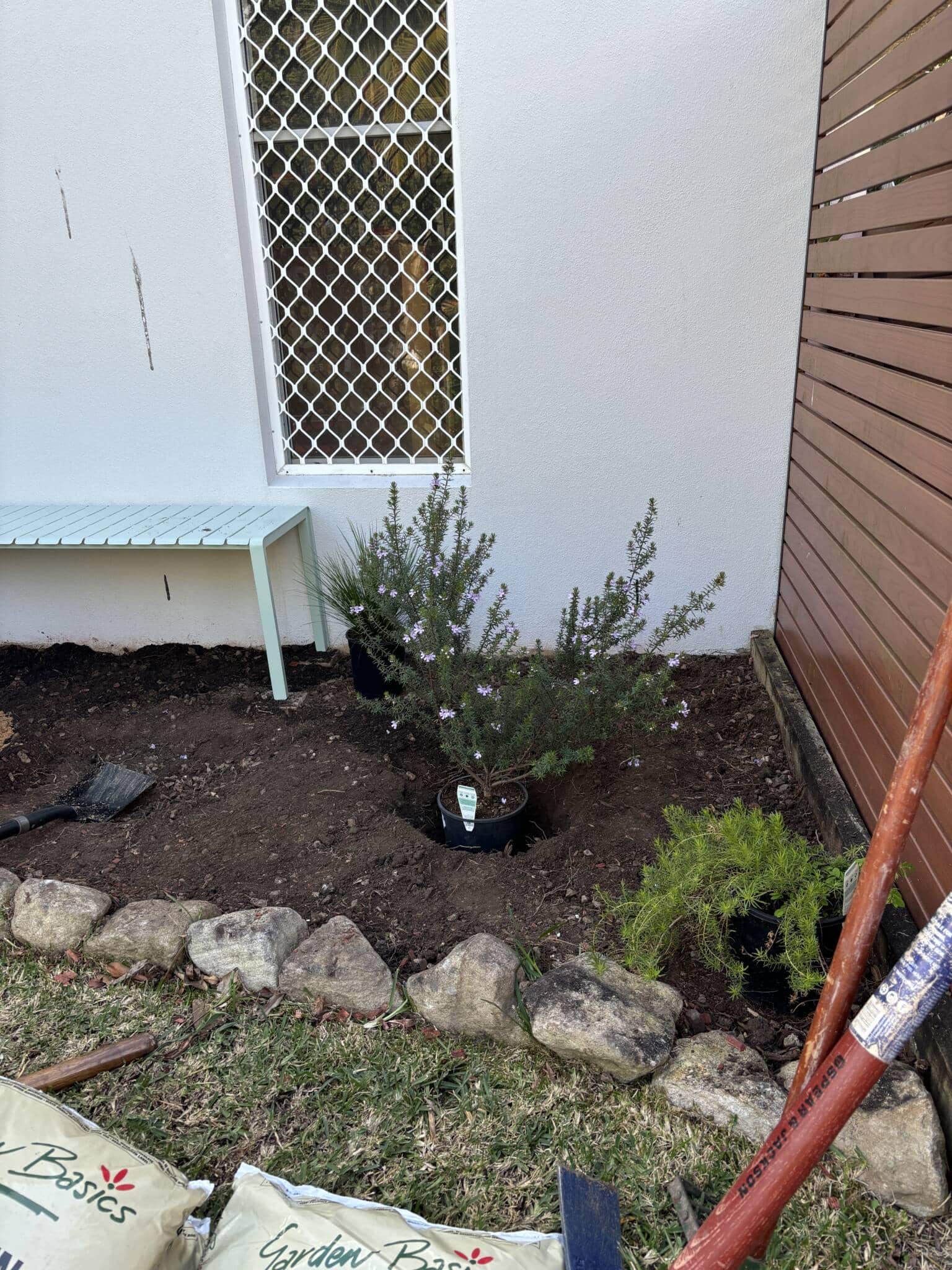
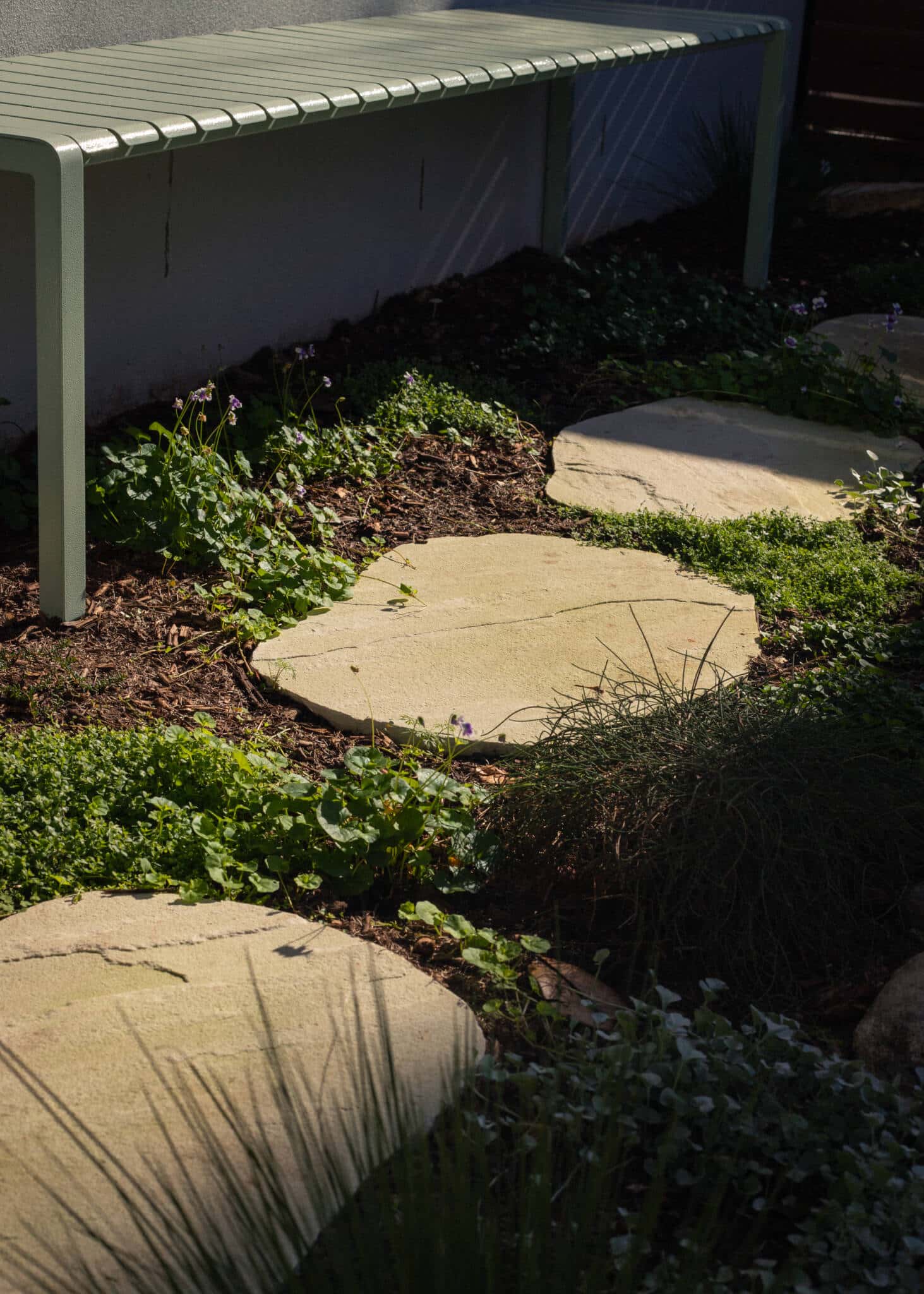

The corridor and retaining wall garden
These have both been the biggest projects so far, beginning four weeks ago.
We had the professionals build a new retaining wall (because our lack of skill and retaining our sanity demanded it). The wall has drainage and will stop most of the water runoff from the property above ours. With that in place and filled with fresh soil, we spent a weekend planting, filling the garden with natives that suit our SE Qld climate and heavy clay soil. I’ve delved deep into learning about natives and what will work best in my garden, all chosen to attract local wildlife and survive our climate’s mood swings.
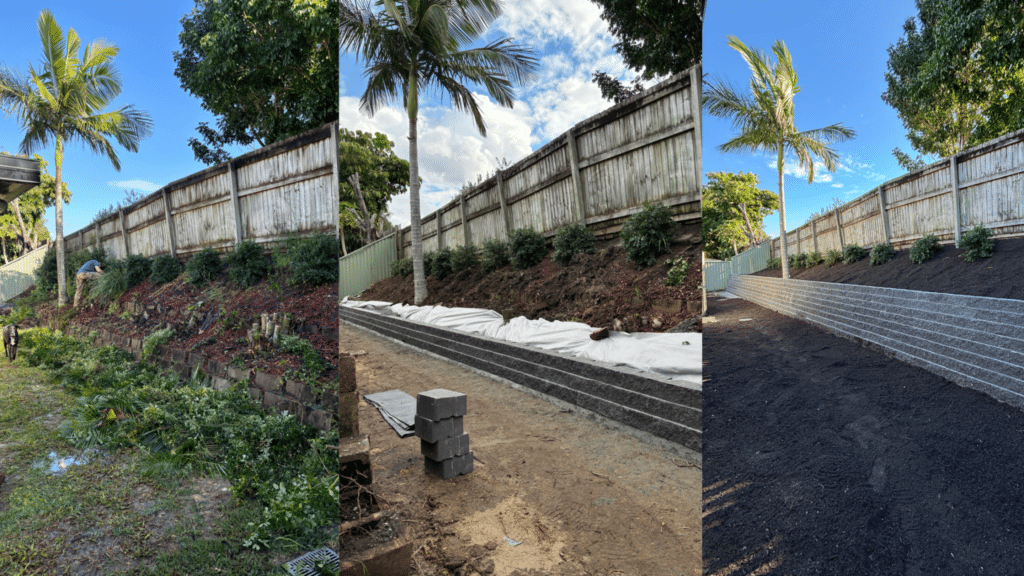
The retaining wall garden planting list includes:
Taller trees and shrubs along the back:
- Prostanthera sieberi (Minty)
- Grevillea simplex (Banana Custard)
- Phebalium nottii (Kay Bryant)
- Phebalium squamulosum
- Grevilleas (Lollypops and Ivory Whip)
- Leptospermum (Mesmer Eyes)
- Leptospermum woonooroonan
- Plectranthus argentatus (Blue Spires)
Medium shrubs and grasses in the middle:
- Lomandra confertifolia
- Lomandra longifolia
- Westringia fruticosa ‘Zena’ (Coastal Rosemary)
- Casuarina green wave
- Pennisetum nafray (when I can source some)
Ground covers at the front:
- Myoporum parvifolium (Fine Leaf)
- Carpobrotus glaucescens (Angular Sea-fig)
- Lots of Chrysocephalum apiculatum (Yellow Buttons) and Brachyscome (Cut-leaf Daisy) when I can source them
- Casuarina glauca and Dichondra Silver Falls (not a native, but it grows well in coastal climates and looks absolutely stunning hanging over walls)
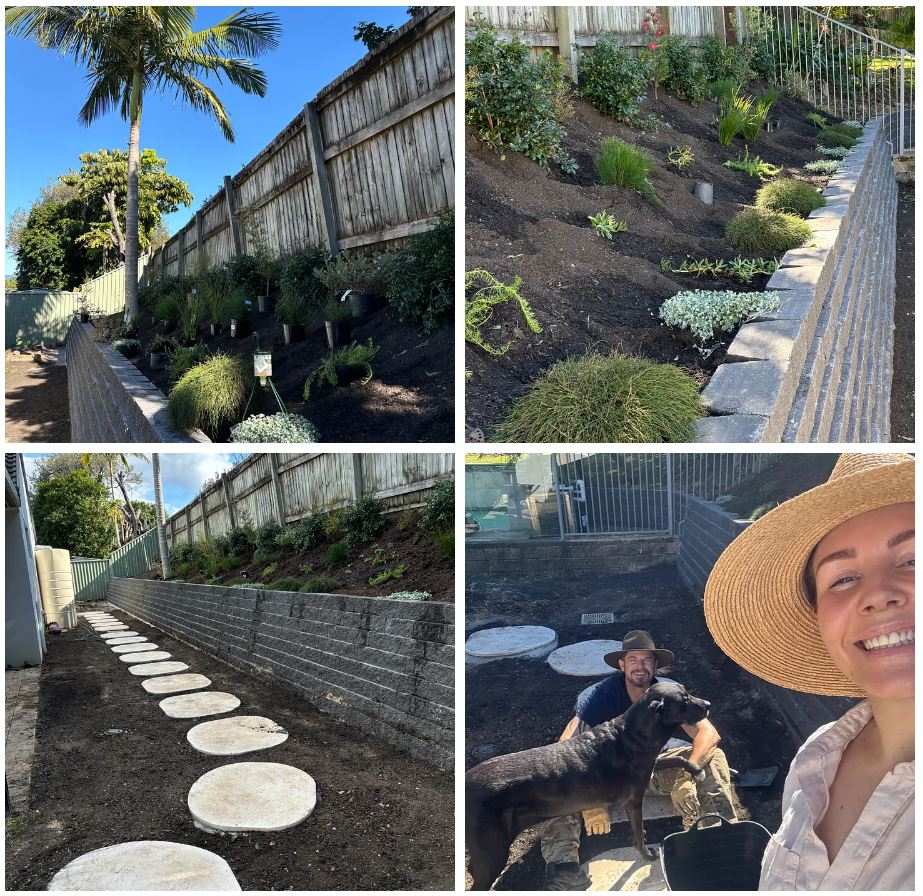
After clearing all the grass from the corridor, we had landscapers come in and lay limestone pavers. Chosen because that area is prone to flooding, and it will make it easier to travel through to get to the veggie garden on the other side.
With the steppers in place, we spent last weekend prepping the ground, removing loose concrete and chunks of clay, and laying fresh soil. Next week, it’s planting the ground cover through the corridor and around the newly laid stepping stones. In between all that, we’ve been slowly building the veggie beds from recycled timber sleepers I found at a local salvage yard.
For all the hard work, I’m loving the journey.
In a world that often feels too fast and too digital, the garden is my little sanctuary, a place where I can slow down and remember what it means to be truly connected to nature (ignoring the phone off in the distance, recording it all to share on Instagram). And there’s pure satisfaction in seeing something I built and planted with my own two hands come together. Creating a place that Dave, I, and our loved ones get to enjoy for years.
And with that, I’m off to take another bite out of that elephant.

